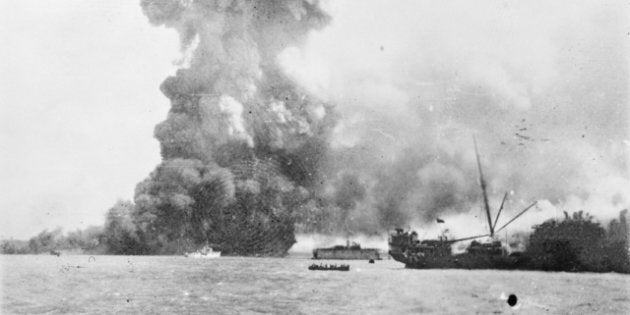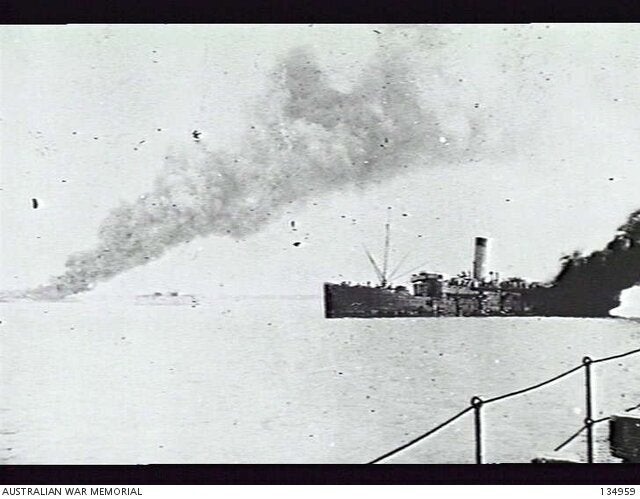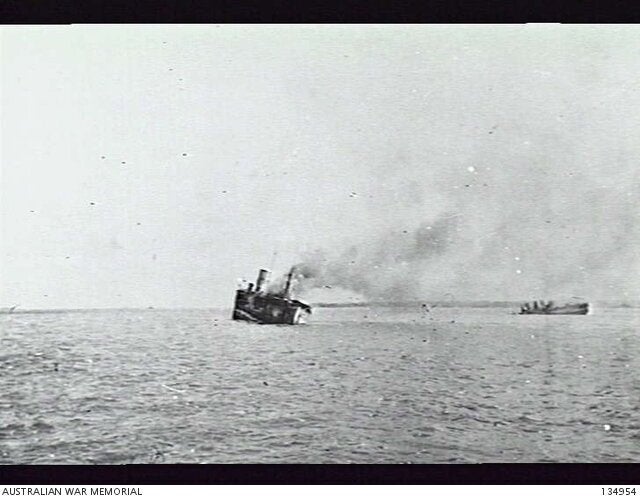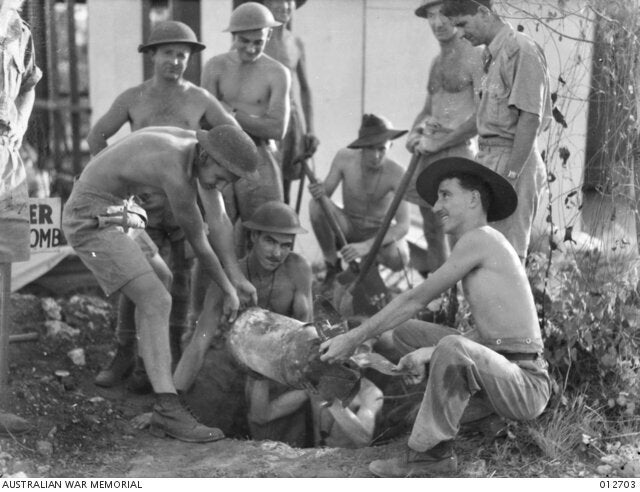
Australians are being urged to learn more about the World War II Bombing of Darwin, as the Top End city prepared to mark 75 years since the largest ever attack foreign attack on the nation.
On Sunday a National Day of Observance will be held to acknowledge those who defended Australia during WWII, marking 75 years since Darwin was attacked and almost 240 people killed in separate air raids by the Japanese.
The attack brought the war to home soil for the first time, and signified the start of a 21-month period of devastating attacks on Northern Australia.
Journalist and prolific author of Australian history Peter FitzSimons is urging Australians to learn more about the largest ever foreign attack on our nation.

"While the Americans venerate what happened in Pearl Harbour, for some reason we Australians are dimly aware of the Bombing of Darwin," FitzSimons told The Huffington Post Australia.
"The significance of Darwin was it was the largest foreign attack on Australian soil. We'd been very blessed in this country not to have had many bombs dropped on us, many torpedoes fired at us. But that day was just the beginning."
Over the next two years, there were more than 100 air raids on Darwin.
"The Australian government tried to not sound too alarmed, but it was a very significant event in Australian history," FitzSimons said.
"Not just Darwin, but across the board. Australians should know more about their history."
"A fortnight ago I visited Pearl Harbour in Hawaii, a rite of passage for many Americans to visit, and I think Darwin should be like that for Australians who really want to understand our own military past."

'It was completely flattened'
Mervyn Fox is 93 years old and arrived in Darwin in 1943. Fox served in WWII with the elite commando squad Z Special Unit, and is the only member of the special squad to visit Darwin for the commemoration this year, he said.
A dispatch rider shortly after the bombing began, he would hand deliver messages all over Darwin because the enemy might have been listening into the wires.
"Everything was just completely flattened," he told HuffPost Australia.
"I came here just after the bombing, we had a signal station and I'd handle all the hand-safe signals that would come from the operatives behind the Japanese lines.
"They couldn't be put over the wire because somebody might be listening in."
Darwin based maritime archaeologist and historian Dr Silvano Jung told the HuffPost more bombs were dropped on Darwin than on Pearl Harbour.
"It was a huge attack," he said.
"A number of the aircraft carriers that participated were the same as the ones used in Pearl Harbour as well. Same ships."
As of Sunday, nine shipwrecks around Darwin will be automatically protected under the commonwealth shipwrecks act, which protects wrecks in Australian waters older than 75 years.
It wasn't until late '42, said Dr Jung, that Australia began hitting back though units such as Z unit -- which sank enemy ships using kaiaks to attach mines to their outer hulls.
Fox told the HuffPost how operatives in three kaiaks used special, splash-proof oars used to sneak up on enemy boats in Singapore Harbour at night to attach magnetic explosives to ships in a mission that resulted, in Fox's words, in Singapore Harbour being lit up "just like daylight."
First signs of the bombing of Darwin
In the days before the two-wave attack on Darwin in 1942, Japanese reconnaissance aircraft were spotted in the sky over the city.
The first signs of the attack came when Zero fighters began strafing an auxiliary minesweeper, HMAS Gunbar, as it passed through the boom protecting the entrance to Darwin harbour, according to The Australian War Memorial.
Soon, and for 40 terrible minutes, bombs and gun fire rained down on the city killing 250 people. Eight of the 47 ships in the harbour were sunk.
One of those ships, the Neptuna, carried 200 depth charges in its cargo which exploded as the ship lay beside the Darwin wharf.

"Darwin is arguably Australia's most inclusive battle," the War Memorial says.
"Those who died that day included members of all three services, in rank ranging from a Wing Commander down to two cooks.
"They also included merchant seamen, postal workers and civilians who were just doing their jobs. They included men and women, black and white Australians, a teenage girl and a grandfather. It is important to recognise that the very first attack on Australia as a nation cost the lives of representatives of that nation."